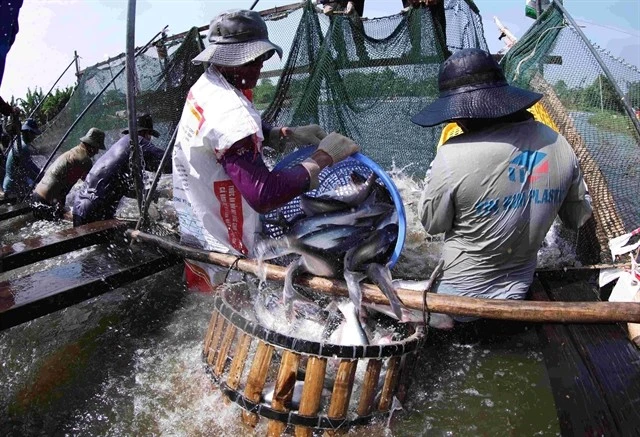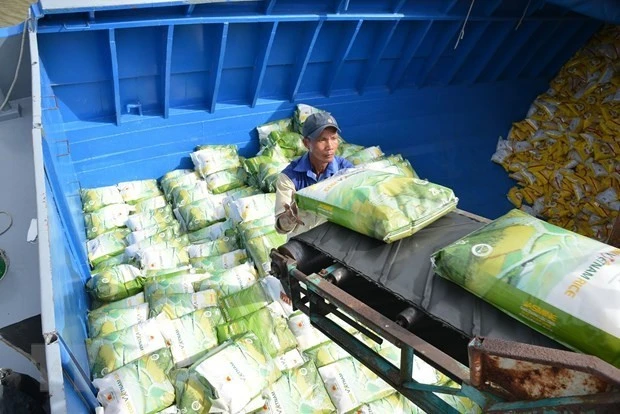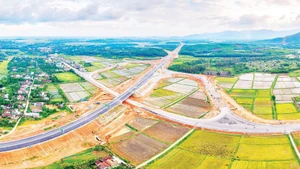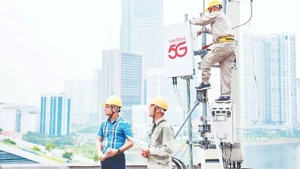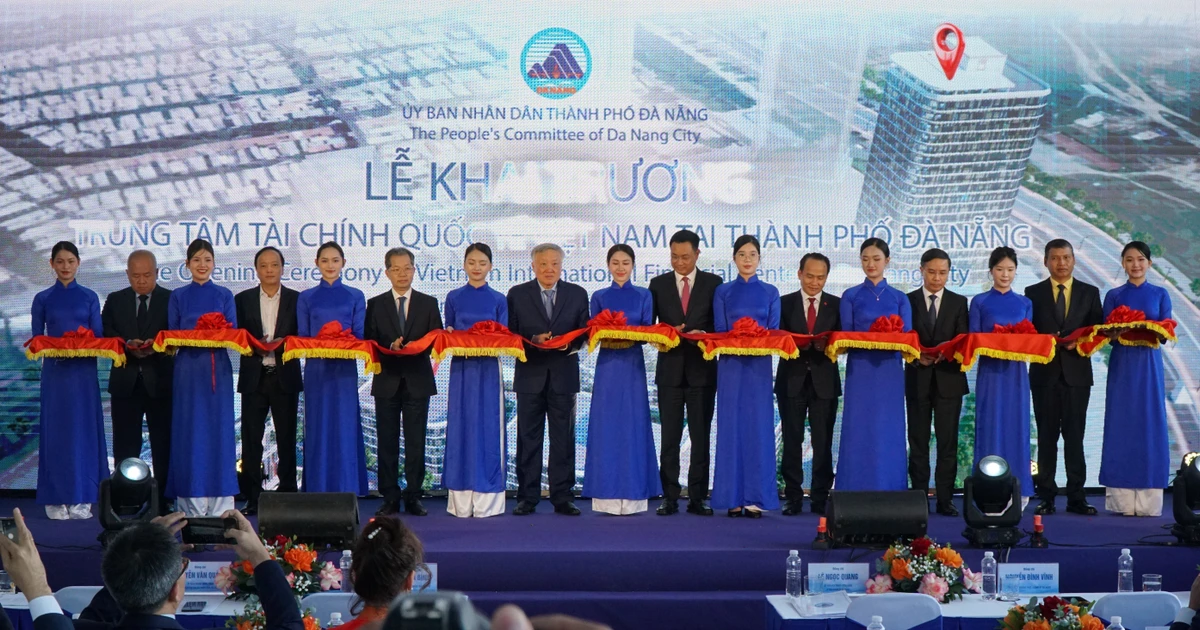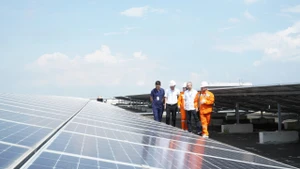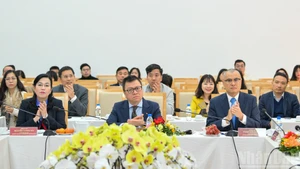The Vietnamese Ministry of Foreign Affairs (MoFA) has just announced that State President Nguyen Xuan Phuc will pay an official visit to the Republic of Korea (RoK) during December 4-7, 2022 at the invitation of his counterpart Yoon Suk Yeol.
“This is the first visit to the RoK by President Phuc since he was elected to be the state president of Vietnam, also the first visit to this nation by the Vietnamese state president after 11 years since former State President Truong Tan Sang’s visit to the RoK in 2011,” the MoFA said in a document on the upcoming visit.
This visit will lay firm groundwork for the two countries to celebrate their 30-year anniversary of diplomatic relations, and especially it is hoped to see the two nations to lift their existing strategic partnership to a comprehensive strategic partnership.
On October 18, 2022, MoFA Minister Bui Thanh Son held talks with his Korean counterpart Park, with the two sides agreed on a plan to raise their bilateral ties to a comprehensive strategic partnership in the context that both countries will celebrate the 30th anniversary of diplomatic relations.
In fact, during a visit to the RoK in December 2021 by Vietnamese National Assembly Chairman Vuong Dinh Hue, he and his counterpart Park Byeong-seug agreed on this new comprehensive strategic partnership set to be established in this year.
The new cooperation would mean more effective mechanisms will be created for Vietnam and the RoK to intensify their bilateral ties, with a major focus laid on investment and trade relationship.
Expanding investment
Vietnam wants to see Korean enterprises increase investment in its territory in a wide range of sectors, especially in high technology, renewable energy, digital transformation, and future industrial sectors. They are also encouraged to invest into the Southeast Asian market in technology transfer, constructing research and development (R&D) centres.
According to the Vietnamese Ministry of Planning and Investment, total accumulative registered investment capital into Vietnam from the RoK as of November 20 hit 80.8 billion USD, making this Northeast Asian economy the largest foreign investor of the Southeast Asian economy.
Regarding the number of projects, the RoK is the biggest foreign investor in Vietnam with new investment decisions, expansions of operational projects, and stake acquisitions and capital contributions in the first 10 months of 2022 – occupying 20.7% of new projects, 33.2% of projects with newly-added capital, and 34.1% of stake acquisitions and capital contributions.
In early this year, the RoK’s JNTC Vina Company producing electronics products was licensed in the northern province of Phu Tho for a scheme to increase its registered capital by another 163 million USD from the initial 125 million USD, in order to increase production at the Thuy Van Industrial Park. In 2021, JNTC Vina expanded its factory by another 49,600 square metres to manufacture tempered glass for automobiles, watches, and cameras.
According to the Korea Chamber of Business in Vietnam (KorCham), many Korean companies are eyeing Vietnam as an attractive investment location in Asia, and more billions of US dollars will be invested in the country in the coming time in a raft of sectors.
“We do believe that the RoK will continue keeping its position as a top foreign investor in Vietnam,” said KorCham’s vice chairman Hong Sun.
Recently authorities of Ha Nam, Hai Duong, Thai Nguyen, Thai Binh, and Bac Ninh provinces licensed 15 projects for Korean investors, valued at billions of US dollars.
For instance, Daewoo was granted a certificate to carry out new 2 billion USD projects in Vietnam, while Amkor Technology, Inc. got licensed by Bac Ninh to implement a 1.6 billion USD semiconductor manufacturing project. All these projects are now under construction.
Many Korean companies including Hyosung, Kyobo Life Insurance, GS Engineering & Construction, Amore Pacific, and Dongwon, and have also revealed their schemes to continue upping investment in Vietnam.
For example, general director of Kyobo Life Insurance Pyun Jung-bum said that as one of the three largest life insurance firms in the RoK, Kyobo always pays special attention to the Vietnamese market. He noted that the company wants to find investment opportunities in the healthcare business and start-ups in Vietnam.
In early October 2022, LS Electric, a leading Korean electric company in Vietnam, announced it would be increasing its production capacity with a new factory in Bac Ninh. It expects this new investment to generate up to 45 million USD a year.
Giant Samsung Electronics Group was recently cited by local media as reporting in its financial statements for the second quarter of this year that the total revenue of its four factories Samsung Thai Nguyen, Samsung Bac Ninh, Samsung Display Vietnam, and Samsung HCMC CE Complex in was 17.9 billion USD, up 30% year-on-year.
The respective revenue and profit was 7.9 billion USD and 770 USD million from Samsung Thai Nguyen; 4.7 billion USD and 400 million USD from Samsung Bac Ninh; 4.1 billion USD and 40 million USD for Samsung Display Vietnam; and 1.3 billion USD and 100 million USD for Samsung HCMC CE Complex.
Samsung is expecting an export turnover of 69 billion USD this year, up from 65.5 billion USD recorded in 2021.
Big leverages
Vietnam and the RoK have agreed on a scheme to better the quality of economic, trade, and investment cooperation, with efforts to be made through devising more favourable policies so as to increase the bilateral trade turnover to 100 billion USD next year and 150 billion USD by 2030.
To this end, the two economies have agreed on further opening doors for goods and services from both sides, while taking advantages of the Regional Comprehensive Economic Partnership (RCEP) and the Korea-Vietnam Free Trade Agreement (KVFTA) in which they are signatories.
Since it came into force in 2015, the KVFTA has changed the face of trade between the RoK and Vietnam.
Statistics from the General Department of Vietnam Customs (GDVC) demonstrated that total trade between Vietnam and the RoK hit 66.01 billion USD in 2020 – including 46.9 billion USD worth of Korean exports, and 78 billion USD in 2021 - including 56.1 billion USD worth of Korean exports. The bilateral trade value in the first 11 months of this year reached 80.7 billion USD – with Vietnamese exports and imports of 22.5 billion and 58.2 billion USD, respectively,
Despite Vietnam’s big trade deficit with the RoK, the GDVC said the deficit is of no worries as almost all products imported from the RoK are materials used for domestic production in Vietnam, not luxury items.
Under the VKFTA, Vietnam removed 31 tariff lines imposed on Korean electronic products and components. When these tariffs were removed importing parts for electronic devices, like mobile phones, from Korea became cheaper.
As a result, Korean electronics firms were able to diversify parts of their supply chains into the Southeast Asian nation without having to worry about increased input costs.
The VKFTA has also eased Vietnam’s investment requirements from the RoK opening up some sectors to greater foreign direct investment. This consists of Vietnam’s energy sector where a number of Korean companies have been working to build Vietnam’s green energy infrastructure.
In January, SK Ecoplant, an affiliate of SK group – the third-largest conglomerate in the RoK, officially partnered with Vietnamese energy company, Nami Solar, in a 200 million USD solar energy joint venture. The project is set to create 250MWp of rooftop solar power to serve the demands of domestic businesses.
In July of this year, SK Group also announced their plan to develop a hydrogen power plant and hydrogen power supply chain in the Mekong Delta city of Can Tho.


